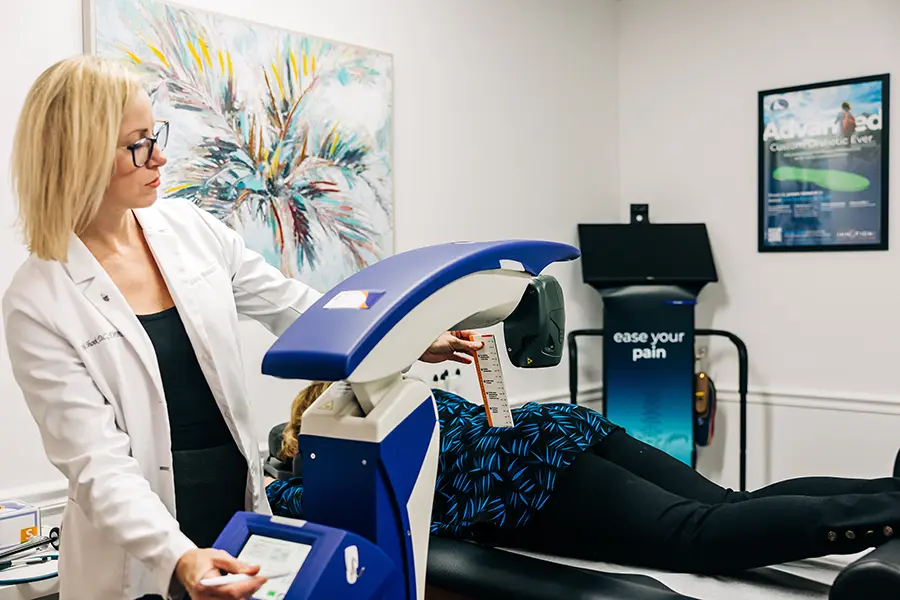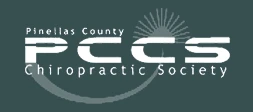Sciatica: Understanding the Condition, Symptoms, and Treatment Options
Are you or a loved one grappling with the debilitating pain and discomfort of sciatica? We offer practical and non-invasive treatments for sciatica and its underlying causes at St. Petersburg Spine and Joint Center. Our experienced team understands the problems that sciatic nerve pain can cause in your daily life, and we’re here to provide hope and relief. This article will explore the causes, symptoms, and conventional treatment options for sciatica. We’ll also explore our innovative approach to help you reclaim your quality of life and return to the activities you love.
Whether you’re experiencing sciatica for the first time or managing chronic symptoms, this guide will provide insights to help you understand and address your pain.
What is Sciatica?
Sciatica affects millions of people nationwide and can be debilitating. Sciatica is pain, weakness, numbness, or tingling anywhere along the sciatic nerve path. However, sciatica is not a medical condition in itself. Instead, it is a symptom of an underlying problem that causes irritation or compression of the sciatic nerve or its nerve roots. The sciatic nerve is the longest in the human body. It starts at the nerve roots in the lower spine (L4-S3) and extends through the buttocks, down the back of each leg, and into the feet.
Other Names for Sciatica
People often misspell sciatica. Here are a few of the most common misspellings of the word when searching online:
- Siatica
- Ciatica
- Sciatia
- Syatica
- Scaitica
- Scistica
- Cyatica
- Scatia
- Scoatica
- Psiatica
- Psyatica
- Syatic
- Siadica
- Scitica
- Sciattica
- Sighatica
- Siactica
- Scaitia
- Sciaticia
- Sciatics
- Siattica
- Syadica

Sciatica Symptoms
The symptoms of sciatica are diverse in intensity and sensation, ranging from mild discomfort to severe, debilitating pain. Common symptoms include:
- Lower back pain
- Pain in the buttock or leg that worsens when sitting
- Hip pain
- Burning or tingling sensation down the leg
- Weakness, numbness, or difficulty moving the leg or foot
- Constant or shooting pain on one side of the buttock or leg
- Pain that may extend to the foot or toes
What does sciatica feel like?
Many people describe sciatica pain as feeling like:
- A sharp, shooting pain
- A burning or tingling sensation
- An electric shock-like feeling
- A dull ache or throbbing
- Pins and needles sensation
The pain can range from mild and infrequent to severe and constant, affecting your quality of life. Sitting, movement, and sudden jolts caused by coughing or sneezing can worsen the symptoms.
Sciatic Nerve Pain Location
The sciatic nerve is the largest in your body. It begins in the lower back and extends through the hips and down each leg. You’ll feel sciatic nerve pain anywhere along this path, typically affecting one side or the other. Sometimes, the pain can even reach the foot or toes. You might also experience decreased knee or ankle reflexes, muscle spasms, or weakness.

What Causes Sciatica?
Sciatica occurs when irritation, inflammation, compression, or pinching affects the sciatic nerve. Several conditions can lead to sciatica, including:
- Herniated or slipped disc: When your spinal disc’s soft, gel-like material bulges out, it can press on your sciatic nerve.
- Spinal stenosis involves narrowing the spinal canal, which can press on the nerves.
- Spondylolisthesis: When one vertebra slips out of place in the spine, it can compress the nerve roots.
- Degenerative disc disease occurs when spinal discs wear down over time, causing pain, compressed nerves, and reduced mobility.
- Injuries: Trauma to the lower back can cause inflammation and nerve compression.
- Pregnancy: The extra weight and pressure on the lower back and pelvis during pregnancy can sometimes lead to sciatica.
- Piriformis syndrome: Sometimes, the piriformis muscle in the buttocks can irritate the sciatic nerve.
Risk Factors for Sciatica
Several factors can increase your risk of developing sciatica:
- Age: Sciatica is most common in people between 30 and 50 years old.
- Occupation: Heavy lifting, prolonged sitting, or twisting of the back at work can increase the risk.
- Obesity: When a person is overweight, it puts more stress on the spine.
- Diabetes is a condition known to cause nerve damage.
- Sedentary lifestyle: Lack of exercise and prolonged sitting can weaken back muscles.
- Smoking: This habit can promote disc degeneration and impair blood flow.
Diagnosis of Sciatica
If you’re experiencing sciatica symptoms, seeing a doctor for a proper diagnosis is essential. The diagnostic process involves:
- Medical history: Tell your doctor about your medical history, including the duration of your symptoms and factors that affect your pain.
- Physical exam: Your doctor will conduct tests to check the reflexes, sensation, and muscle strength in the area you are experiencing pain.
- Imaging tests: Below are some of the tests your doctor might order:
- X-rays check for abnormalities, such as decreased space between the spinal vertebrae and bone spurs.
- Computed Tomography (CT) scan for a detailed view of the bone and disc structures.
- Magnetic Resonance Imaging (MRI) to look for problems with spinal discs or pinched nerves.
- Nerve conduction studies: Your doctor may order this test to look for reduced electrical impulses between nerves, indicating nerve damage.
Treatment Options for Sciatica
Treatment for sciatica aims to relieve pain, promote healing, and prevent future episodes. The approach prescribed will depend on the cause and intensity of symptoms. Here are some common treatment options:
Conventional Treatments
- Rest and reduce activity: While doctors do not recommend complete bed rest, you can help your condition by avoiding activities that increase pain.
- Physical therapy: Work with a therapist to learn exercises that enhance flexibility and strengthen back-supporting muscles
- Hot and cold therapy: Alternating heat and ice packs can help reduce inflammation and pain.
- Medications: Over-the-counter, anti-inflammatory pain relievers such as ibuprofen can help manage pain and inflammation. Sometimes, your doctor may prescribe stronger pain medications or muscle relaxants.
- Stretching exercises: Gentle stretches that rotate the hip can provide relief. It’s important to consult with a physical therapist for appropriate exercises.
- Chiropractic care: Some people find relief through spinal manipulation performed by a licensed chiropractor.
- Epidural steroid injections reduce pain and inflammation caused by conditions like sciatica with a minimally invasive procedure.
- Acupuncture: This traditional Chinese medicine technique may help ease pain for some individuals.
- Cognitive Behavioral Therapy (CBT): This type of psychotherapy can help manage chronic pain.
Surgical Options
Doctors may recommend surgery in severe cases or when other treatments fail to provide relief. Surgical options can include:
- Microdiscectomy: Removal of the part of the herniated disc pressing on the nerve.
- Laminectomy surgery removes part of your spinal vertebra to remove pressure on spinal nerves.
- Spinal fusion: In cases of instability, surgeons may use this procedure to stabilize the spine.
Advanced Alternative Approaches to Sciatica Treatment in St. Petersburg, Florida
St. Petersburg Spine and Joint Center provides options to help patients avoid surgery or reduce their dependence on medication. We offer two promising alternative treatments that have shown remarkable results: Laser Spinal Decompression and MLS Robotic Laser Therapy.

Spinal Decompression
For people who suffer from sciatica pain but wish to avoid surgery, non-surgical spinal decompression may provide relief without complications from surgical intervention. Spinal decompression is a non-surgical procedure that removes pressure on spinal discs by gently stretching and decompressing the spine without surgery. This stretching action creates a suction-like effect within the discs, which may help pull bulging or herniated disc material back into place.
This innovative approach offers many benefits for those seeking relief from sciatic nerve pain:
- Pain Reduction: Gently stretching the spine to introduce movement and negative pressure through spinal decompression eases pressure on the sciatic nerve, providing pain relief for many patients.
- Improved Mobility: Patients can often return to daily activities more easily as pain decreases.
- Non-Invasive Alternative: Spinal decompression therapy is non-invasive, reducing the risks associated with surgical options. This makes it an attractive treatment for those seeking to avoid surgery.
- Disc Rehydration and Repair: The negative pressure created by spinal decompression draws critical nutrients, water, and oxygen into the disc. This process promotes natural healing by rehydrating the disc and supporting the body’s built-in repair mechanisms.
- Enhanced Blood Flow: Spinal decompression therapy boosts blood flow to problem areas, helping to reduce swelling and speed up the body’s natural repair process.
- Speedy Recovery Time: Since the procedure is non-invasive and doesn’t involve surgery, patients can usually get back to their everyday activities soon after treatment.
- Customized Treatment Plans: Doctors tailor spinal decompression therapy to individual patient needs, ensuring a personalized approach to sciatica relief.
- Long-Term Benefits: This therapy aims to provide long-lasting relief and improve spinal health by addressing the root causes of sciatica, such as herniated discs or spinal stenosis.
- Complementary to Other Treatments: For optimal results, spinal decompression can be combined with other therapies, such as chiropractic care, physical therapy, and acupuncture.
- High Success Rate: Studies show high overall success rates (up to 91%) in treating sciatica and other spine issues, especially when combined with exercises and proper nutrition, as seen in cases following the HillDT decompression protocol, published in a study in March 2015

MLS Robotic Laser Therapy
MLS Robotic Laser Therapy is a non-invasive treatment that utilizes low-level laser energy to stimulate tissue repair and reduce inflammation. By targeting the affected area of the spine, this therapy reduces pain and promotes healing. Unlike surgical procedures, cold laser therapy requires no incisions, anesthesia, or downtime.
Self-Care and Prevention
While you can’t always stop sciatica from happening, here are a few ways to lower your chances of getting it and handle the symptoms better if you do:
- Maintain good posture: Sitting or standing up straight takes the pressure off your lower back, which can help prevent sciatica.
- Regular exercise: Focus on exercises that strengthen your core and back muscles.
- Lift smart: When picking up heavy things, bend your knees and use your leg muscles to lift instead of your back. Also, to protect your spine, avoid twisting your body while lifting.
- Use proper ergonomics: Set up your workspace to reduce strain on your back.
- Quit smoking: Smoking can contribute to disc degeneration and impair healing.
- Maintain a healthy weight: Excess weight puts more stress and pressure on your spine.
- Stay active: Regular movement can help keep your muscles strong and flexible.
When to Seek Medical Attention
Some cases of sciatica may resolve on their own with time and self-care. But, there are situations where immediate medical attention is necessary. Seek medical care if you experience:
- Severe or intense pain
- Pain that doesn’t improve with rest and self-care measures
- Loss of bladder or bowel control
- Progressive weakness in the leg
- Numbness in the genital or anal region
- Fever along with back pain
- Pain following a severe injury, such as a traffic accident
Living with Sciatica
For some people, sciatica might go away on its own after a few weeks or months. However, others may experience chronic or recurrent episodes. In these cases, developing a long-term management strategy is crucial.
This may involve:
- Regular exercise and stretching routines
- Ergonomic adjustments at home and work
- Weight management
- Regular check-ups with healthcare providers
- Stress-busting activities like meditation or yoga
Remember, everyone’s experience with sciatica is unique. What works for one person may not work for another. Therefore, it is crucial to team up with your doctor to create a treatment approach tailored just for you.
How to Get Started on the Road to Recovery
Consultation with Our Expert Team: Schedule a consultation with our experienced healthcare professionals to determine if you are a suitable candidate for these treatments. Our team will assess your symptoms, medical history, and overall health to provide personalized recommendations. Not all individuals with sciatica are candidates for our treatments, so scheduling a consultation with our team to assess your unique situation is essential.
By spotting the warning signs early, getting the proper medical help, and making some changes to your daily habits that are good for your back, you can keep sciatica under control and stop it from messing up your regular activities. Sciatica can be challenging, but with proper understanding and management, most people can find relief and improve their quality of life.







